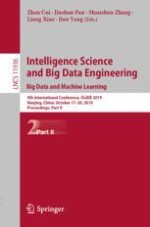2019 | OriginalPaper | Chapter
Causal Discovery of Linear Non-Gaussian Acyclic Model with Small Samples
Authors : Feng Xie, Ruichu Cai, Yan Zeng, Zhifeng Hao
Published in: Intelligence Science and Big Data Engineering. Big Data and Machine Learning
Publisher: Springer International Publishing
Activate our intelligent search to find suitable subject content or patents.
Select sections of text to find matching patents with Artificial Intelligence. powered by
Select sections of text to find additional relevant content using AI-assisted search. powered by
